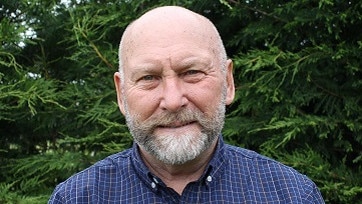Revealed: Every Victorian council’s financial position
Ratepayers are being warned service cuts are on the table as some regional councils face a long road to get back into the black. See your council’s bottom line by using our searchable table.

Ballarat
Don't miss out on the headlines from Ballarat. Followed categories will be added to My News.
The long term future of local councils across regional Victoria is looking shaky with some having to find up to $8m to get back into the black.
The Municipal Association of Victoria is calling for more flexible rate caps and a bigger slice of the federal funding pie to ensure the financial viability of rural councils.
President David Clark said rates revenue for some councils in regional Victoria barely covered half their operating costs.
“Rates revenue for my own council, Pyreness Shire, only covers 40 per cent of our costs and rates for the council next door (Hepburn Shire) only covers about half their costs,” Mr Clark said.
“Metro councils cover 80 per cent or more of their operating expenses through rates revenue.”

Mr Clark acknowledged that many regional ratepayers couldn’t afford “five per cent rate increases”.
However, setting a rate cap over several years and giving councils the ability to choose how it was applied would help balance the books, he said
“If there was a cap of say 10 per cent across four years, so it could be 4 per cent in a difficult year and then 2 per cent for the following three years, councils would have more flexibility.
Financial assistance grants from federal tax revenue had dropped from 1 per cent to just 0.6 per cent since being introduced in the 1970s, Mr Clark said.
“We need those grants to get back to where they used to be.”
Hepburn Shire recently revealed it had to find an extra $4m in permanent savings in order to break even within three years.
The draft 2024-25 budget exposed a likely $2m deficit, after $5.5m in new loans and $1.5m in operational cuts.
Cutting services and applying to the Essential Services Commission for a variation to the rate cap would be considered in consultation with the community.

Mayor Brian Hood said “times were tough” as inflation hurt households, businesses and all levels of government.
“The cost of materials, operating costs and capital works are increasing at a rate much higher than the rate cap,” he said.
“There has also been a reduction in the opportunity to secure grants, which are a critically important income source.”
Hepburn chief executive Bradley Thomas storm recovery works had cost the council about $4.5m over the past three years, representing 21 per cent of the annual rates income.
In northern Victoria, Loddon Shire was grappling with an $8.5m budgeted deficit, while in the state’s west Colac Otway Shire faced a $4.4m shortfall, and in the southwest Glenelg Shire had budgeted for a $2.1m deficit.
All three councils projected a similar result for their 2025-26 budgets.

Colac Otway Shire chief executive Anne Howard said the shire was battling an increasing gap between revenue and expenses.
Ms Howard said the shire had limited revenue streams to fund the ongoing management of its large asset base.
“While user fees may be part of the solution Council is very mindful of the community’s lower capacity to pay compared to their metropolitan counterparts,” she said.
Glenelg Shire was facing similar pressure as material costs escalated at a much greater rate that the rate cap.
“This is the most significant factor into why Council has again proposed a deficit in the upcoming budget,” a spokersperson said.
“The reduction of grant funds and opportunities will exacerbate this position going forward.”
A Loddon Shire spokesperson said its financial situation was being driven by increased costs particularly in insurance, information security and utilities as well as drawing down on cash reserves to fund targeted projects.


